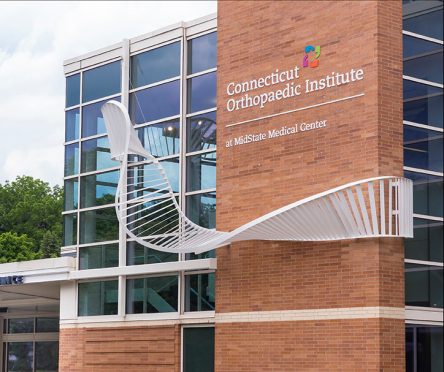The knees are the strongest joint in your body and can absorb almost seven times your body weight. But protecting them is essential — especially if they’re already starting to hurt.
“There are many things you should – and should not – do to keep your knees healthy. If you’re already having knee aches, it’s especially important to care for the knees to keep it from worsening,” says Curtis Campbell, MD, an orthopaedic surgeon with the Connecticut Orthopaedic Institute at St. Vincent’s Medical Center.
We asked Dr. Campbell to dive into what NOT to do to keep your knees in tip-top shape.
3 things NOT to do to keep your knees healthy.
Keeping your knees in good shape requires not just smart exercise but also avoiding actions that can cause harm. Here are some common activities you should avoid to protect your knees:
1. High-intensity, high-impact exercise.
It’s important to stay active, even if you have knee issues. Strength training can provide stability, and cardio can reduce body weight and in turn, wear and tear on the joint.
But not all exercise is beneficial. Some movements, like squats, jumps, lunges, and high-impact classes (such as CrossFit) can place unnecessary strain on your knees. These activities often involve repetitive pounding, which can lead to joint wear and tear over time, especially if your form is incorrect or you push yourself too hard.
“Regular exercise is always important, but modifying activities and exercise routines is imperative to prevent progression of knee pain or arthritis and the need for medical intervention,” Dr. Campbell says.
When lifting weights, try using lighter loads with higher repetitions. And instead of heavy lifts like squats or lunges, try seated knee extensions or hamstring curls.
2. Running or walking on hilly terrain.
Running or walking on steep inclines, whether uphill or downhill, puts extra stress on your knees due to the unnatural angles involved.
Flat surfaces are much kinder to your joints, reducing the risk of injury or aggravation of existing conditions.
“Pre- and post-exercise activities — appropriate stretching, warm-ups and cool-down — are also important,” he adds. “Don’t forget to take rest days off between workouts so your knees can recover fully.”
3. Lifting or carrying heavy objects.
Carrying heavy loads puts a tremendous amount of pressure on your knees, especially if you’re not using proper posture. If you must lift, try to keep the weight manageable and ensure you bend your knees and lift with your legs, not your back.
Twisting your body while carrying weight can cause serious knee injuries. This kind of movement places your knees in a vulnerable position, making them more prone to sprains or even ligament tears. Always move your feet to turn, rather than twisting your torso.
> 6 Exercises to Help Your Knee Pain
Tips for protecting your knees.
Knee health isn’t just about avoiding certain activities — there’s also things you can do to be proactive. Dr. Campbell suggests you:
- Maintain a healthy body weight. This keeps excess pressure from being applied to your knees. Even minor weight loss can lead to great pain reduction, Dr. Campbell notes.
- Follow a healthy diet. Solid nutrition helps promote bone and muscle health while also reducing inflammation.
- Practice good posture. Slouching or slumping adds stress to the joints.
- Wear supportive shoes. These, and inserts, help maintain proper foot and leg alignment and absorb shock, reducing force on the knees. Shoes lacking support like flip-flops or going barefoot puts more stress across your knees and increases injury risk.
When to see a doctor.
If knee pain leaves you feeling unsteady when walking or becomes severe, talk to your primary care provider or an orthopedic specialist.
“No one knows your body better than you. If something doesn’t feel right, be safe and seek expert care to reduce risk of further injury,” Dr. Campbell says. “It’s common to chalk pain up to normal aging and it can take longer to recover as we get older. But, if the pain doesn’t improve with rest, ice and anti-inflammatories, it’s not normal aging.”



